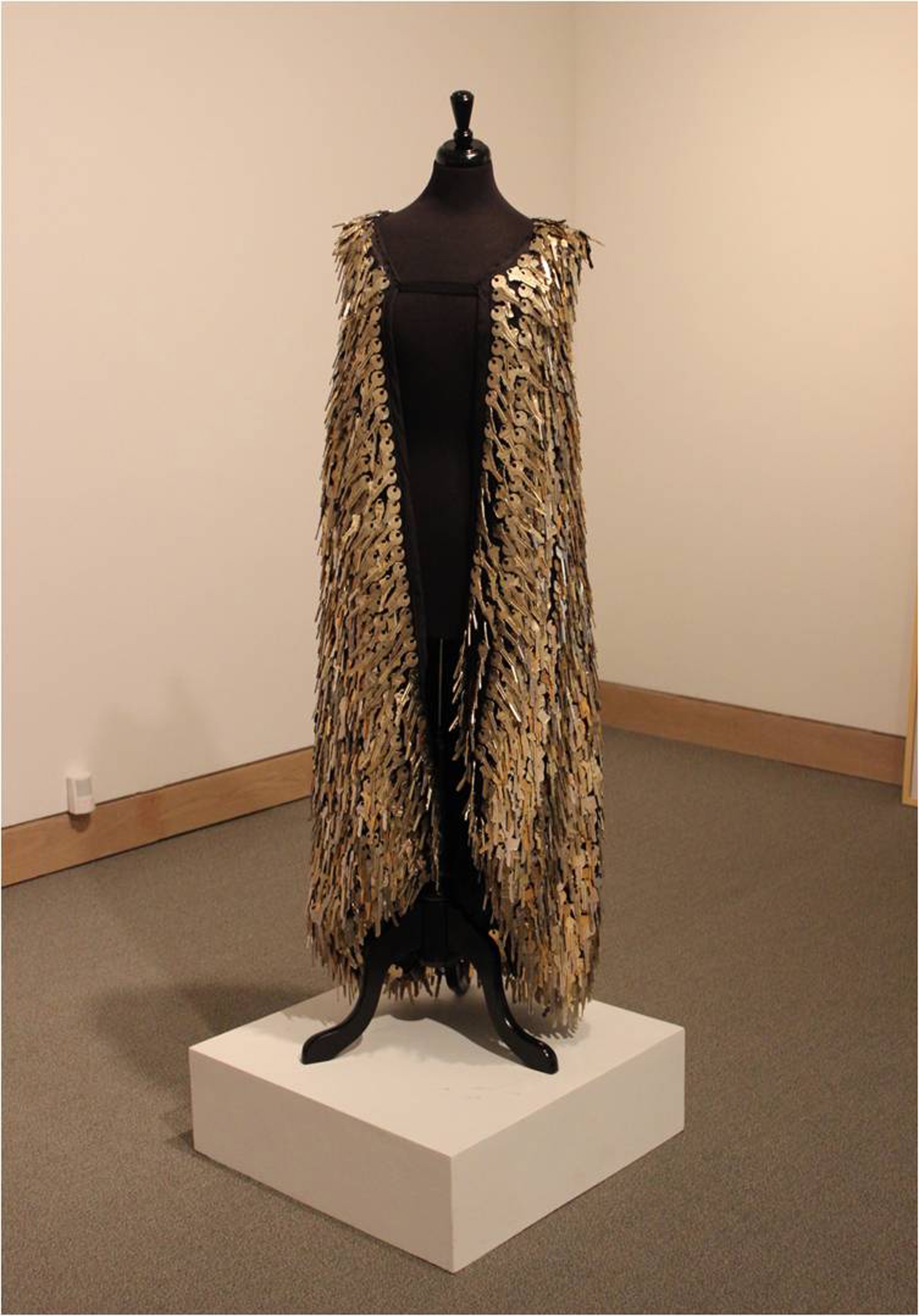
This vest is made from more than 4,000 re-used metal keys, garment labels, fabric, and thread. The weight is just over 80 lbs. which represents the average weight of clothing every person in the U.S. tosses in the trash every year. There is also a short video that goes along with the installation so viewers can also hear the beautiful siren song the vest makes when someone walks in it, like the twkinkling notes of “Buy me, buy me.”

Back view.
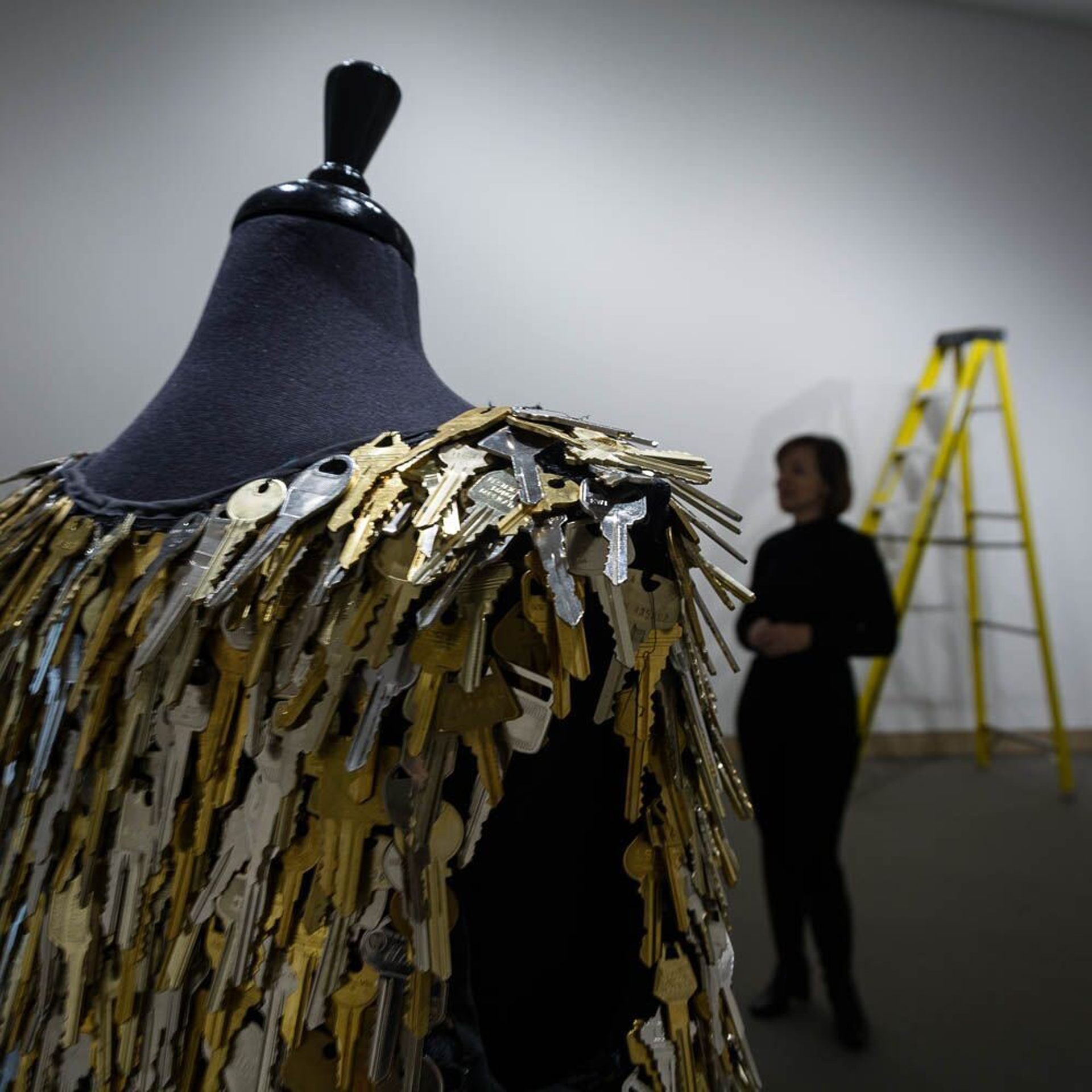
Detail of shoulder area.
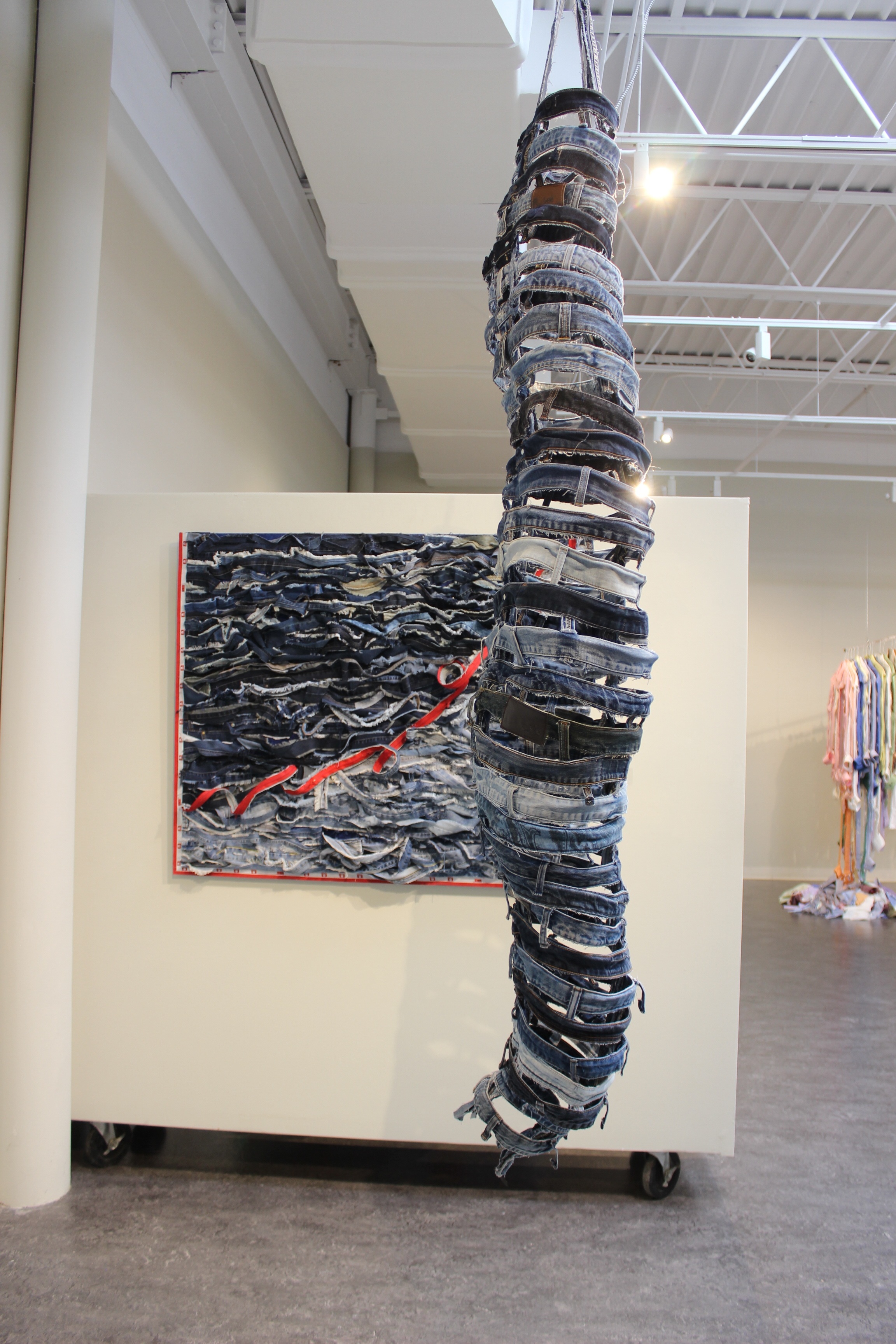
This view of the work., taken during a solo exhibition at the Meredith College Gallery, shows the spinal cord shape created by the jeans waistbands, ranging in size from infants to 3X.
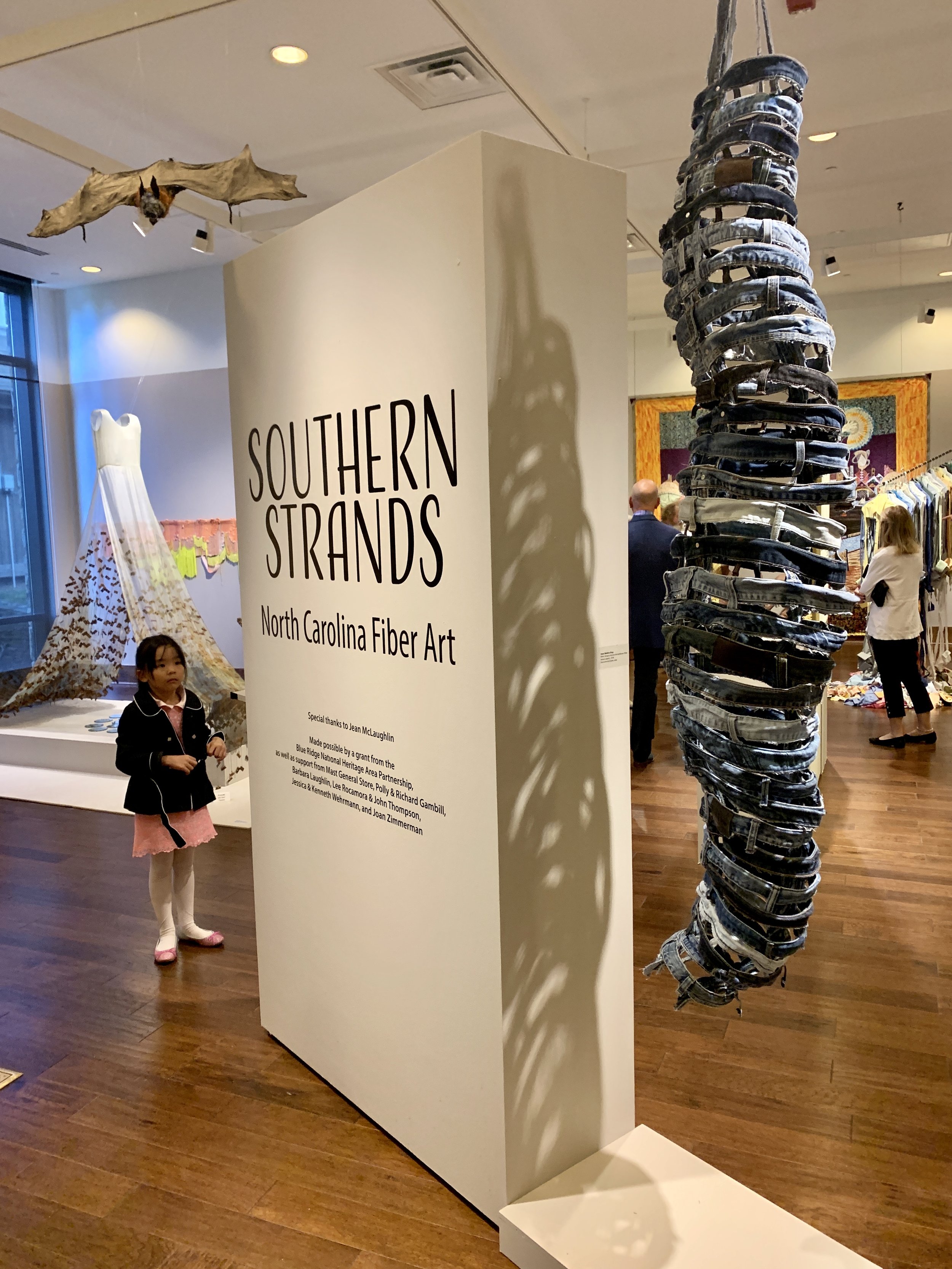
This photo is from “Southern Strands: North Carolina Fiber Art,” an exhibition of the work of 40 NC fiber artists.
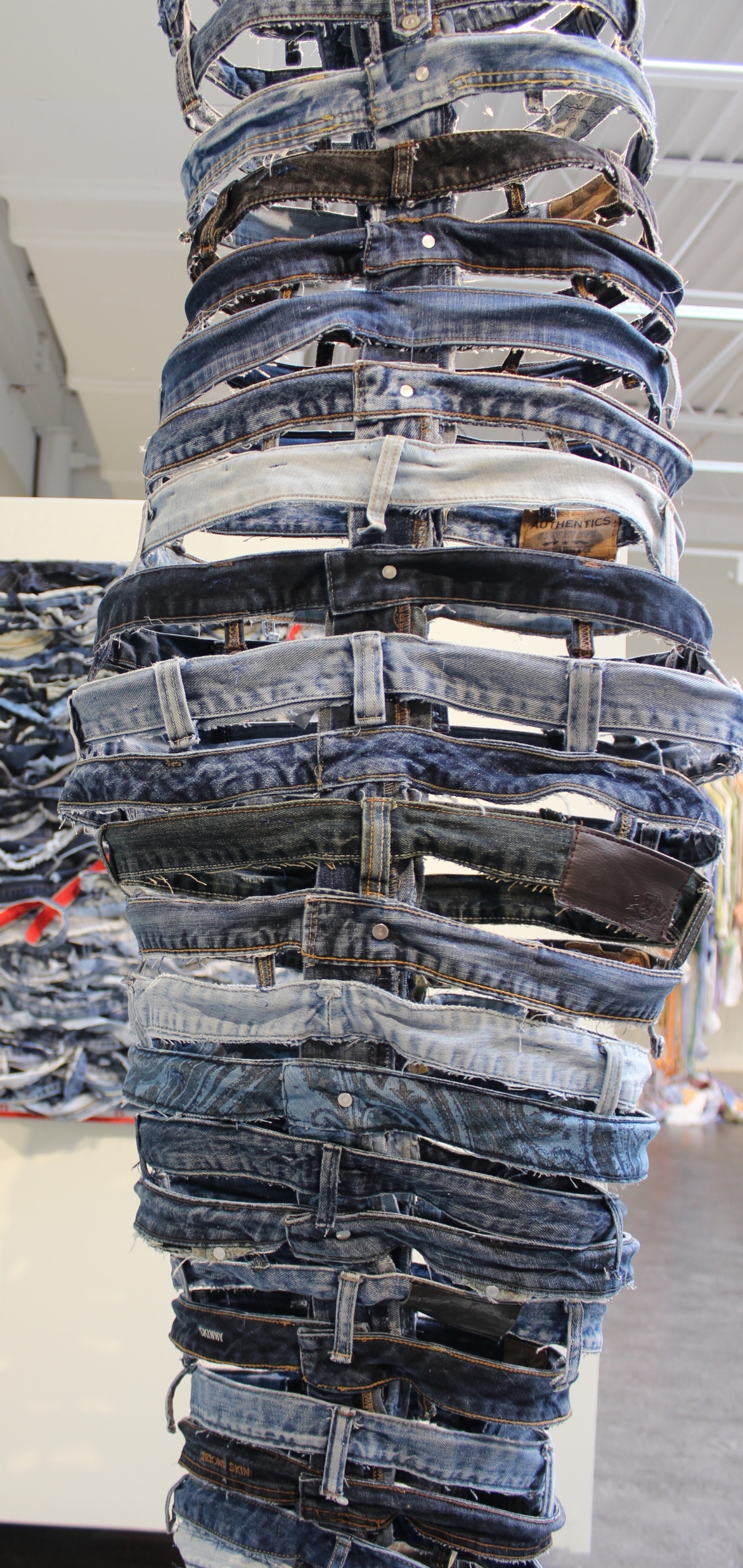

Utilizing remnants from the jeans waistband sculpture, previous, I used the inner and outer seams to create a chart. The effects of using GMO seed on our environment, on the health of farmers and farm workers has been abundantly documented. The exponential increase in the demand for jeans, of all shapes, colors, and styles— by people the world over—has lead to a parallel increase in the death rate of farmers and farm workers who are all but forced into using GMO seeds that purport to increase yields, but also require the use of more an more toxic pesticides as time goes by.

The truth is most Americans and Western Europeans and more and more people the world over wear jeans. Jean manufacturers have figured out vastly more ways than the standard fly-front first made by Levi in 1801. Now they come in a variety of washes, colors, blends, styles, lengths, stretch, and more, such that many people have from 2-20 jean garments in their wardrobes. The irony here is that consumers are often duped into paying significantly higher prices for the models that have been “pre-distressed,” in a variety of ways, which tend to shorten the useful life of the garments because they fall apart faster and/or fall out of fashion.


Rear view of the work installed at Rocky Mount Mills. Community members contributed to the skirt installation by gifting their used jeans, knowing they would be given to charity thrift shops for resale when the piece was deinstalled.
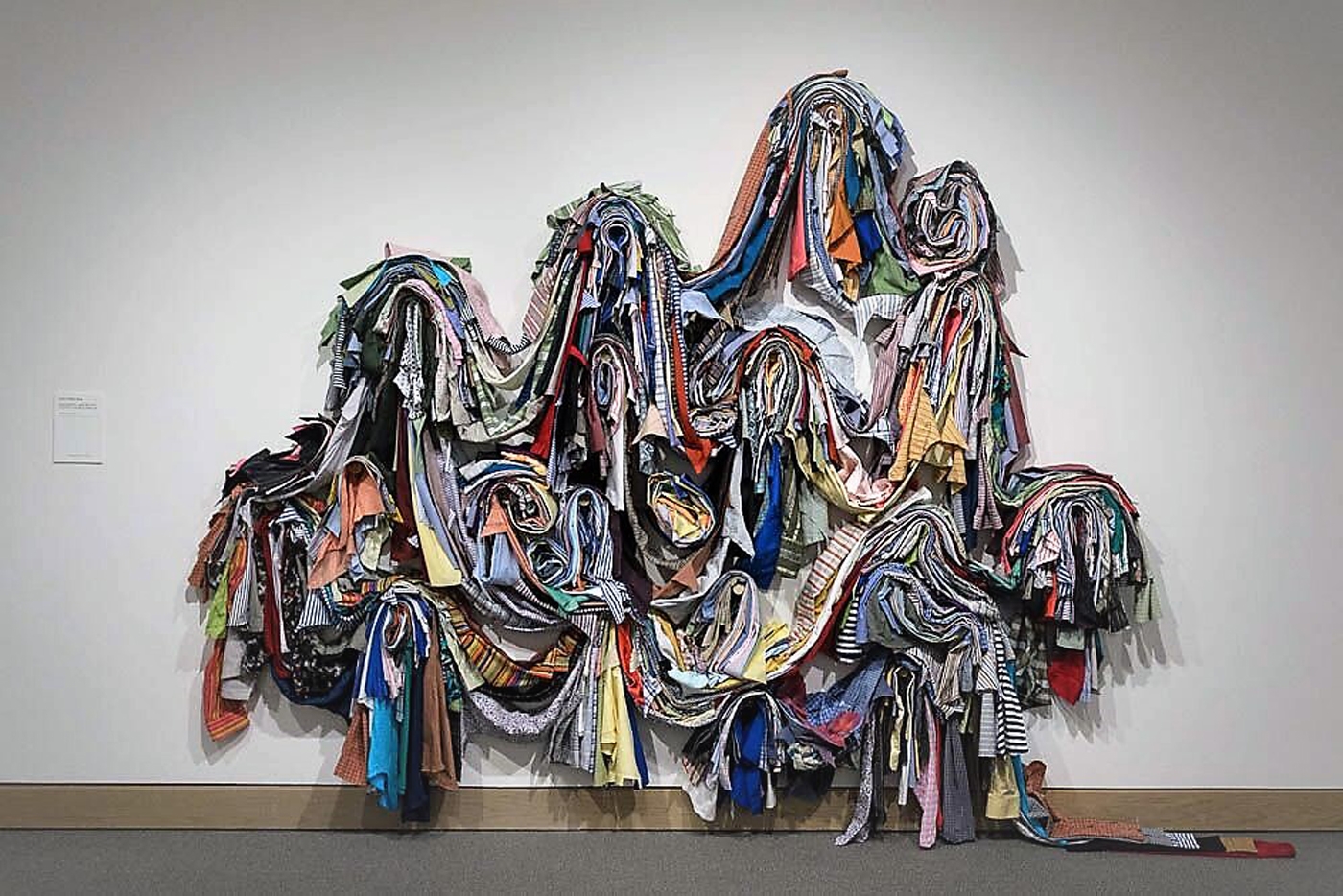
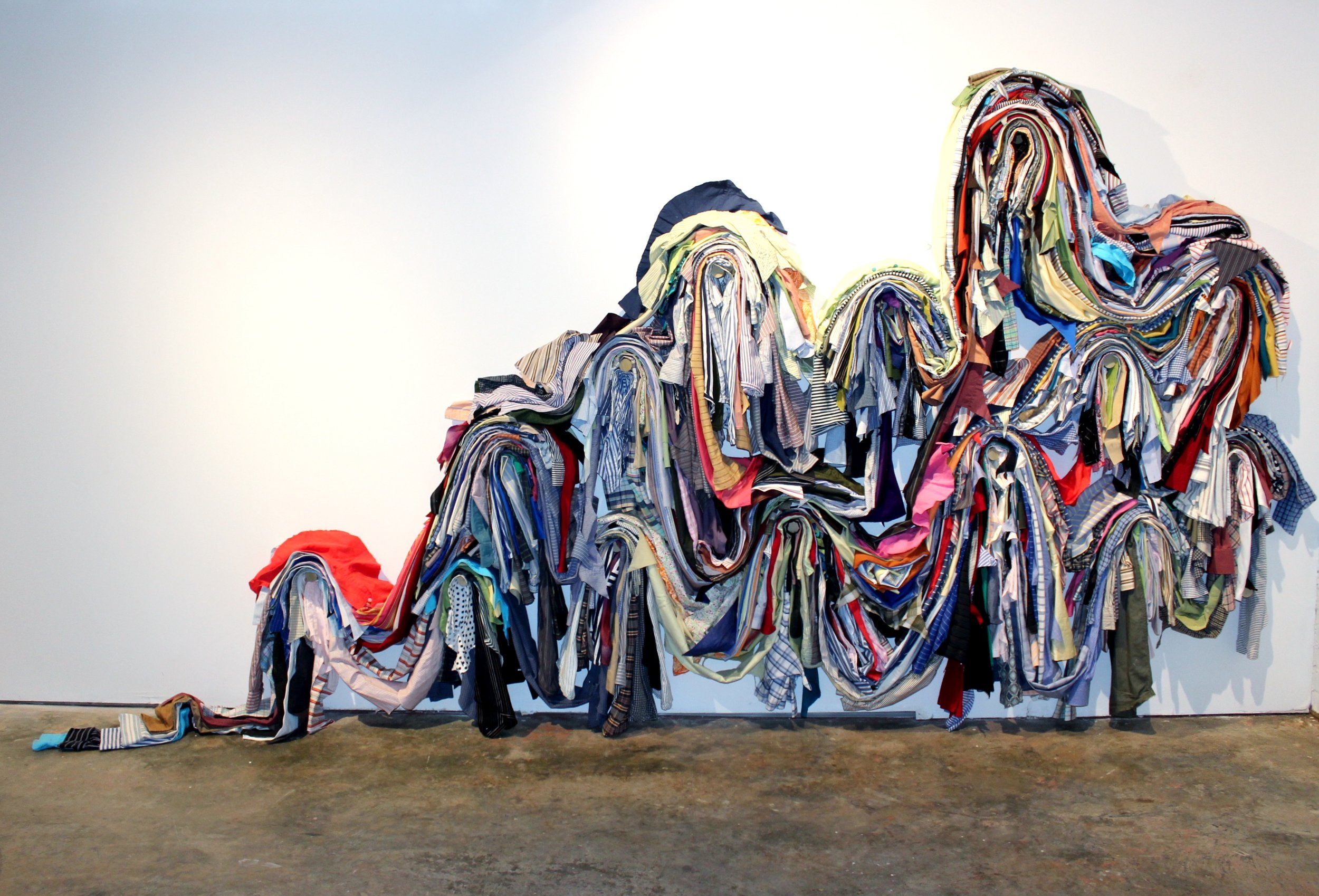
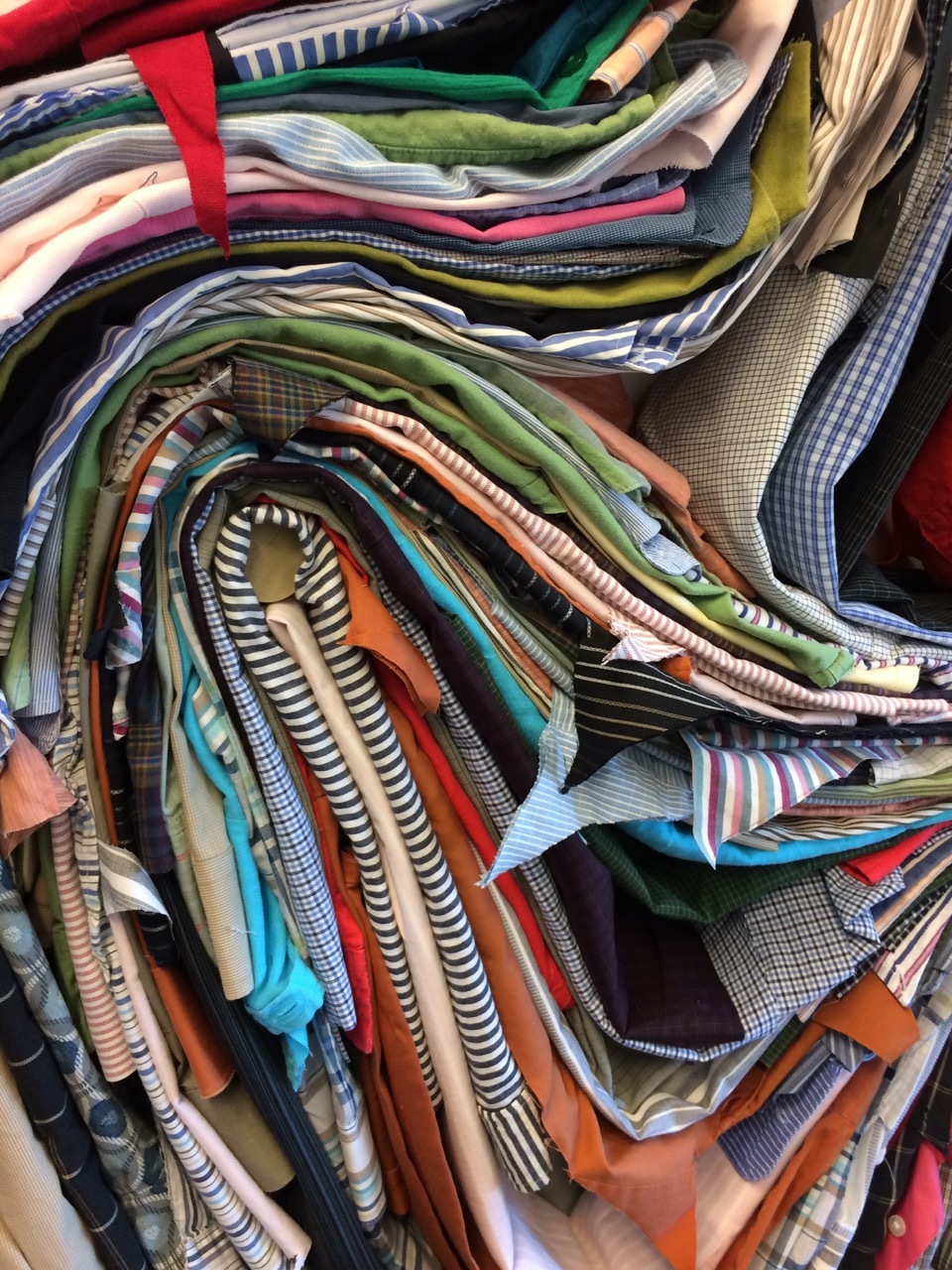
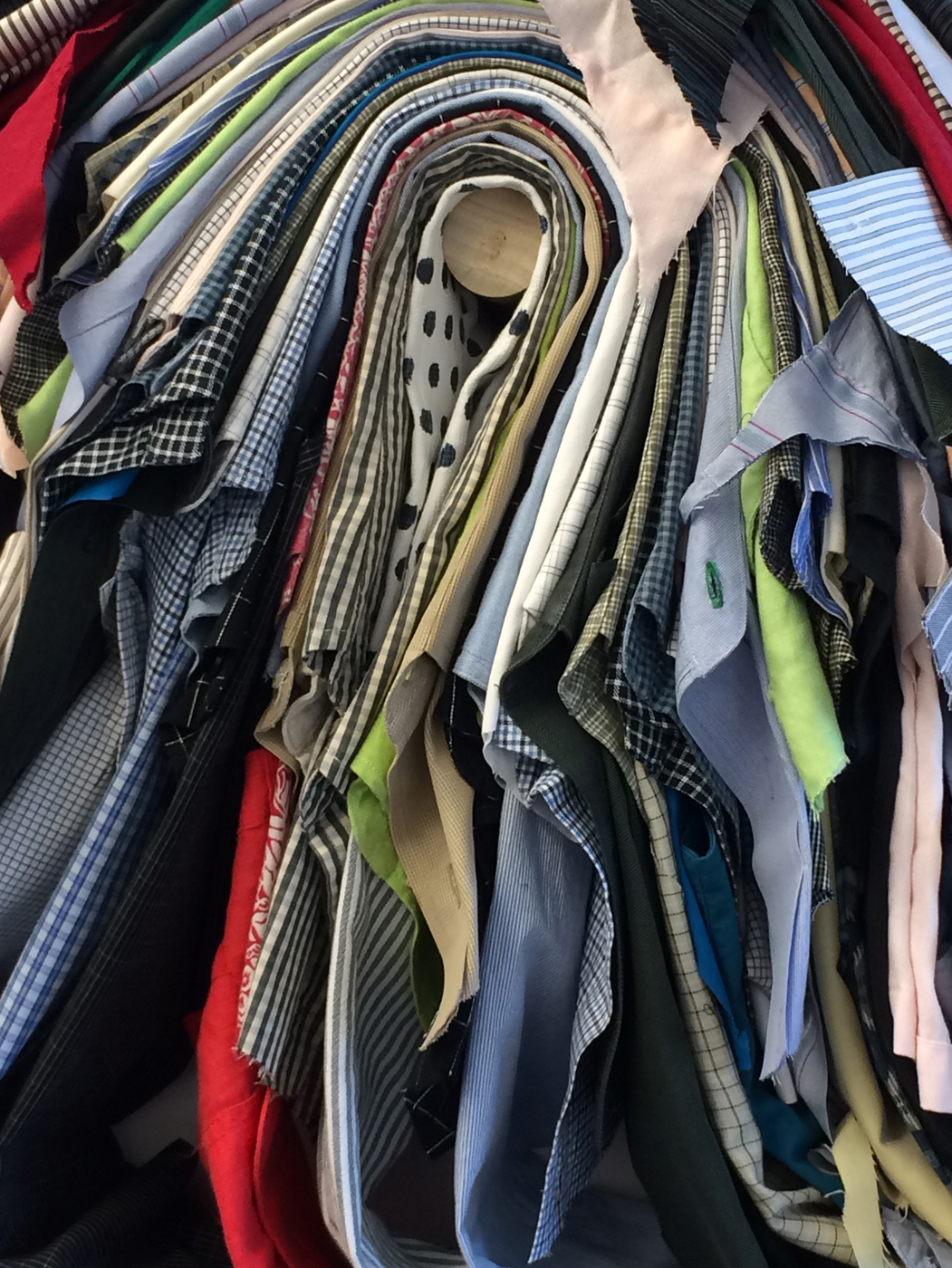
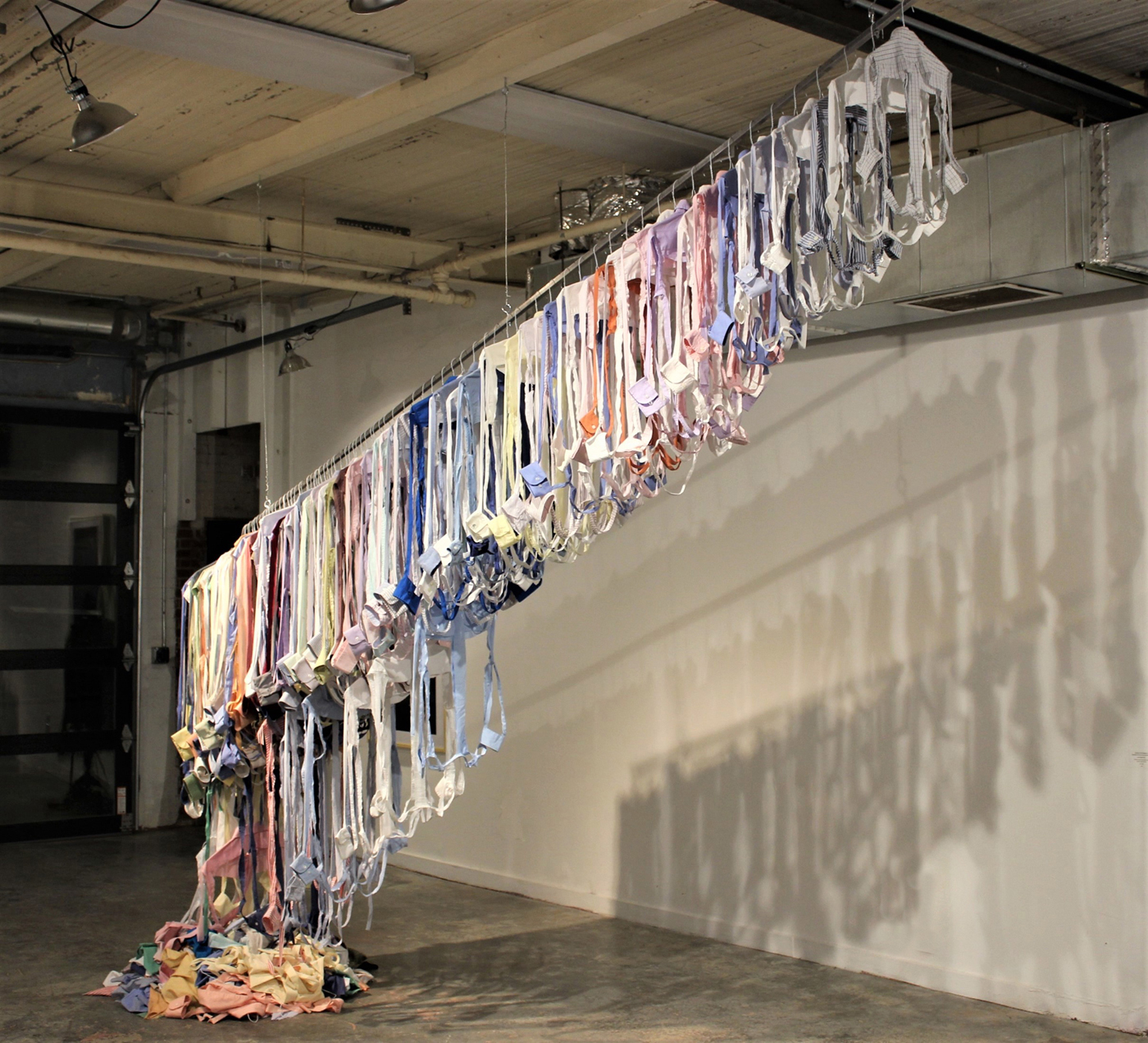
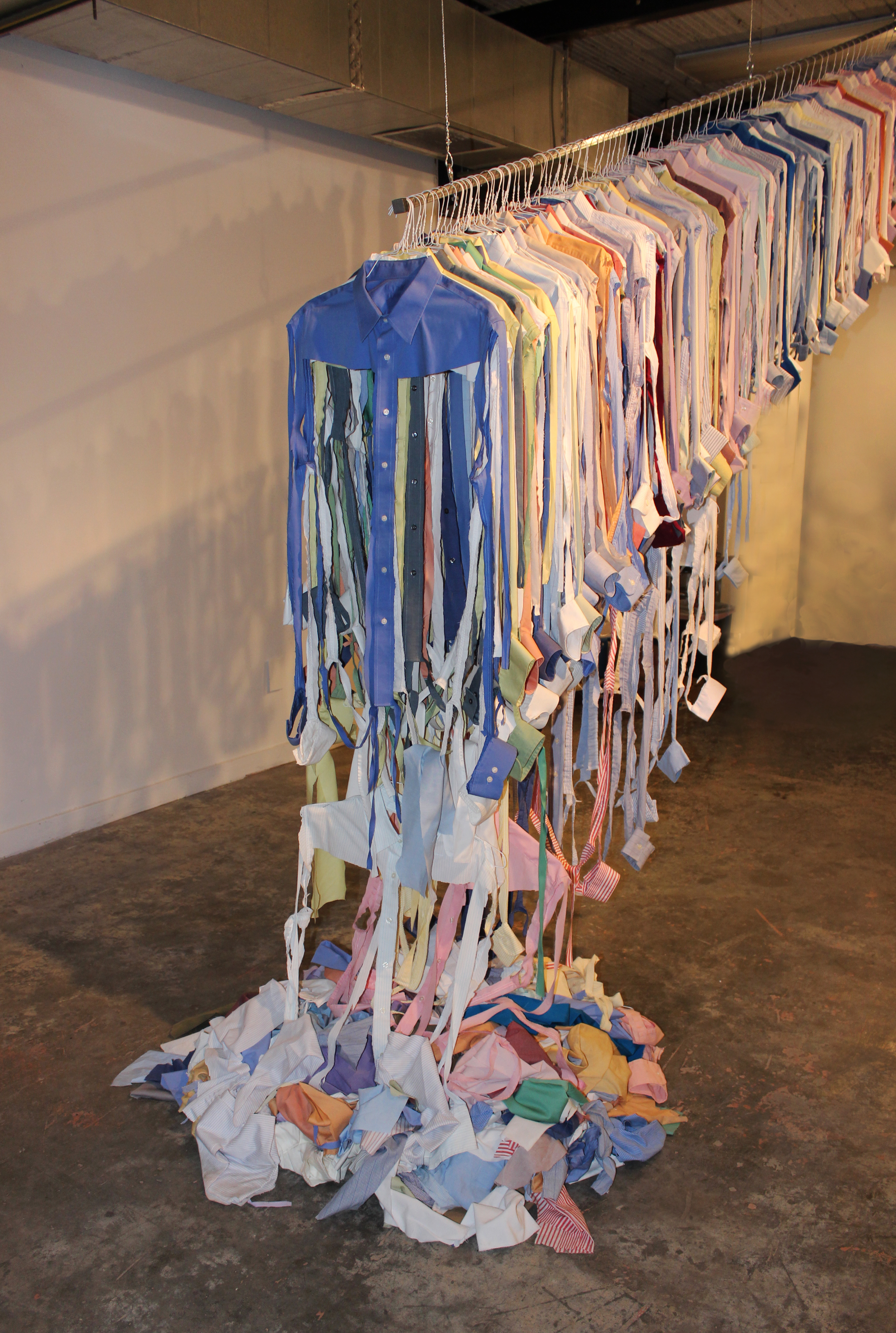

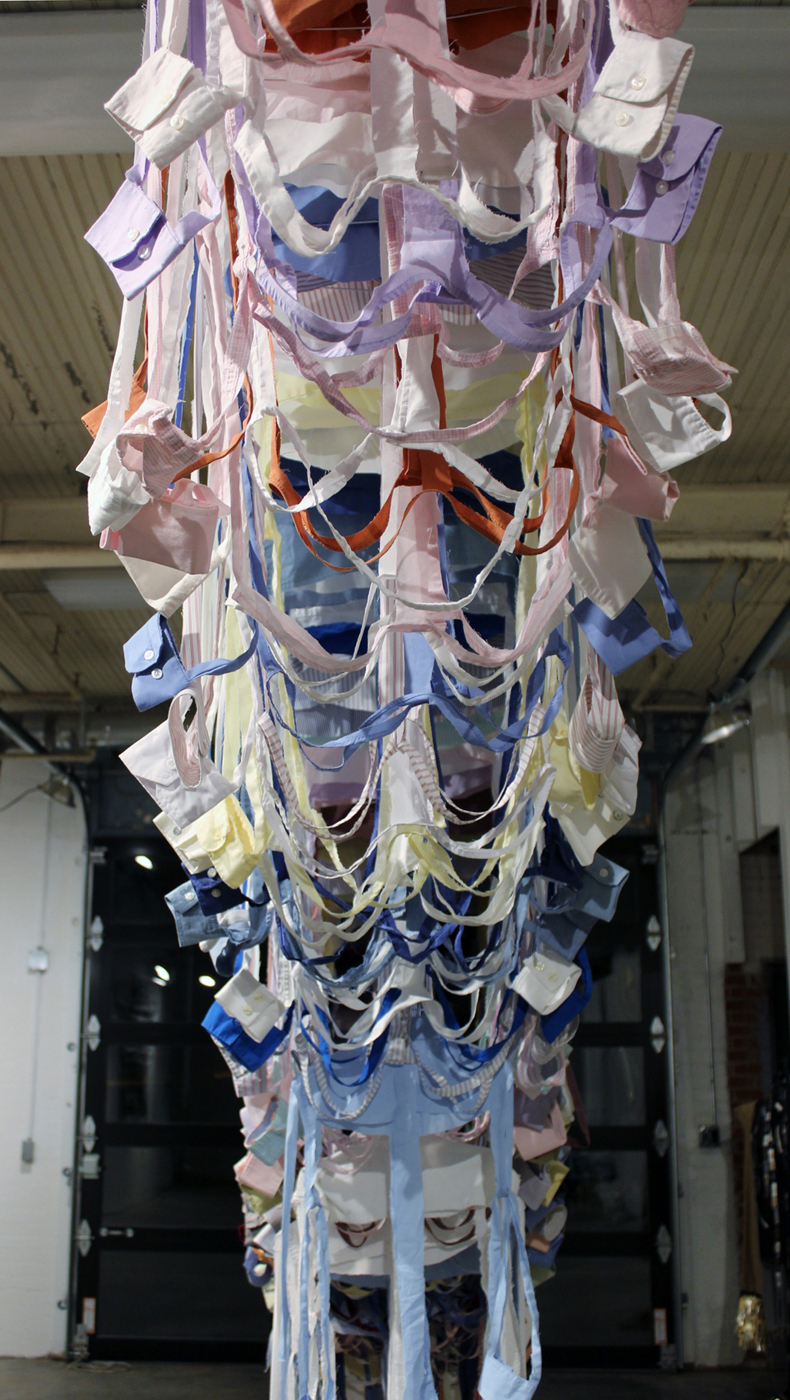


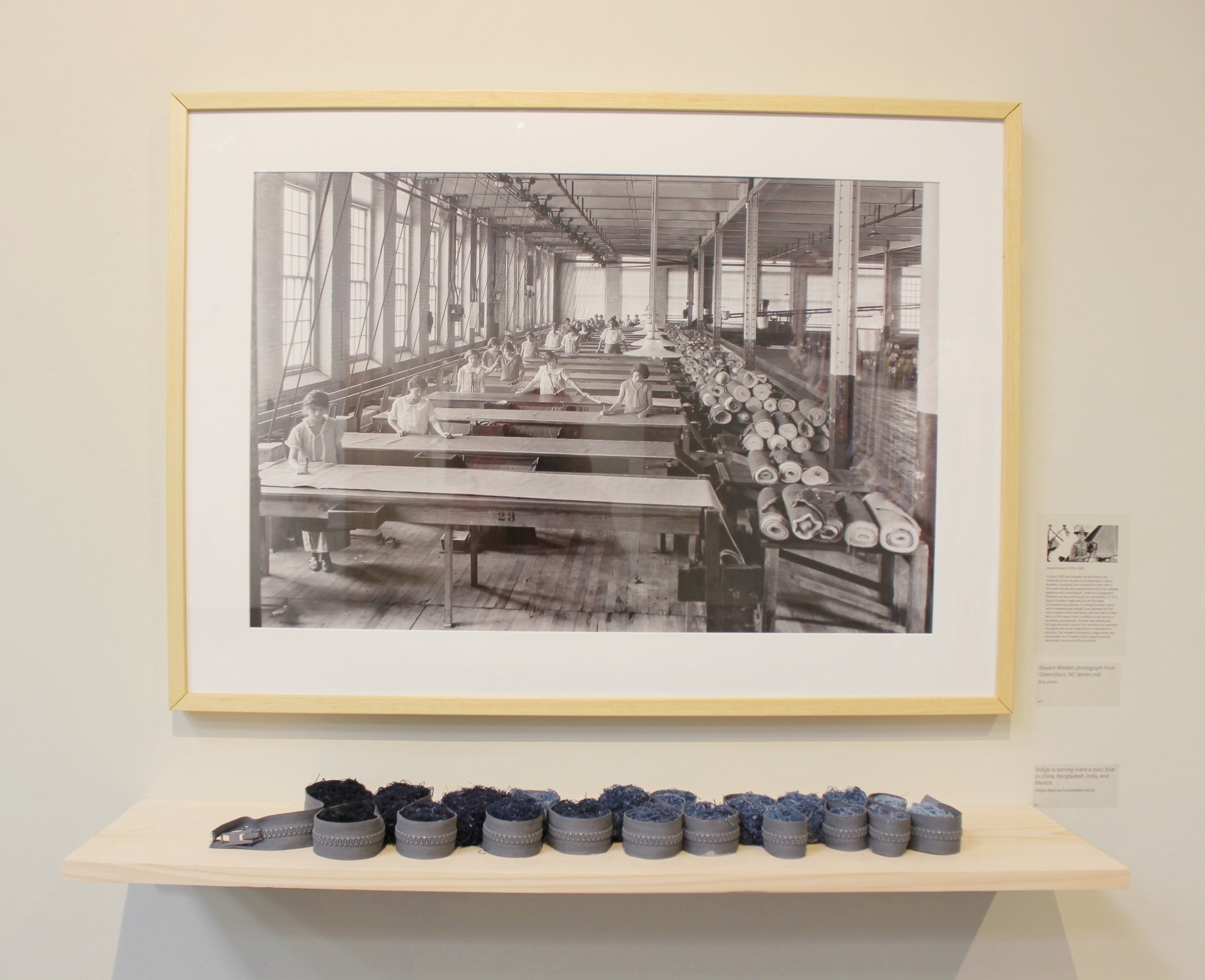
Photograph by Bayard Wooten of a 1920s denim mill in Greensboro, NC



Nearly complete work in progress—demonstration and interaction with the visiting public.

This sculpture is an amalgam of a 1970s cotton Double Wedding Ring quilt and cheap polyester blouses from the 2000s.

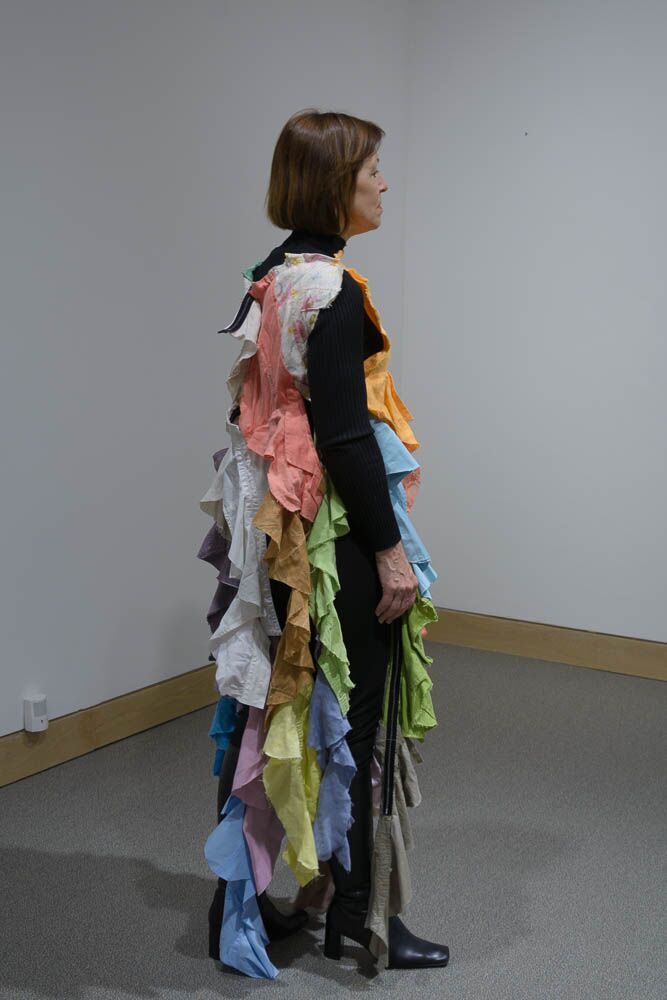

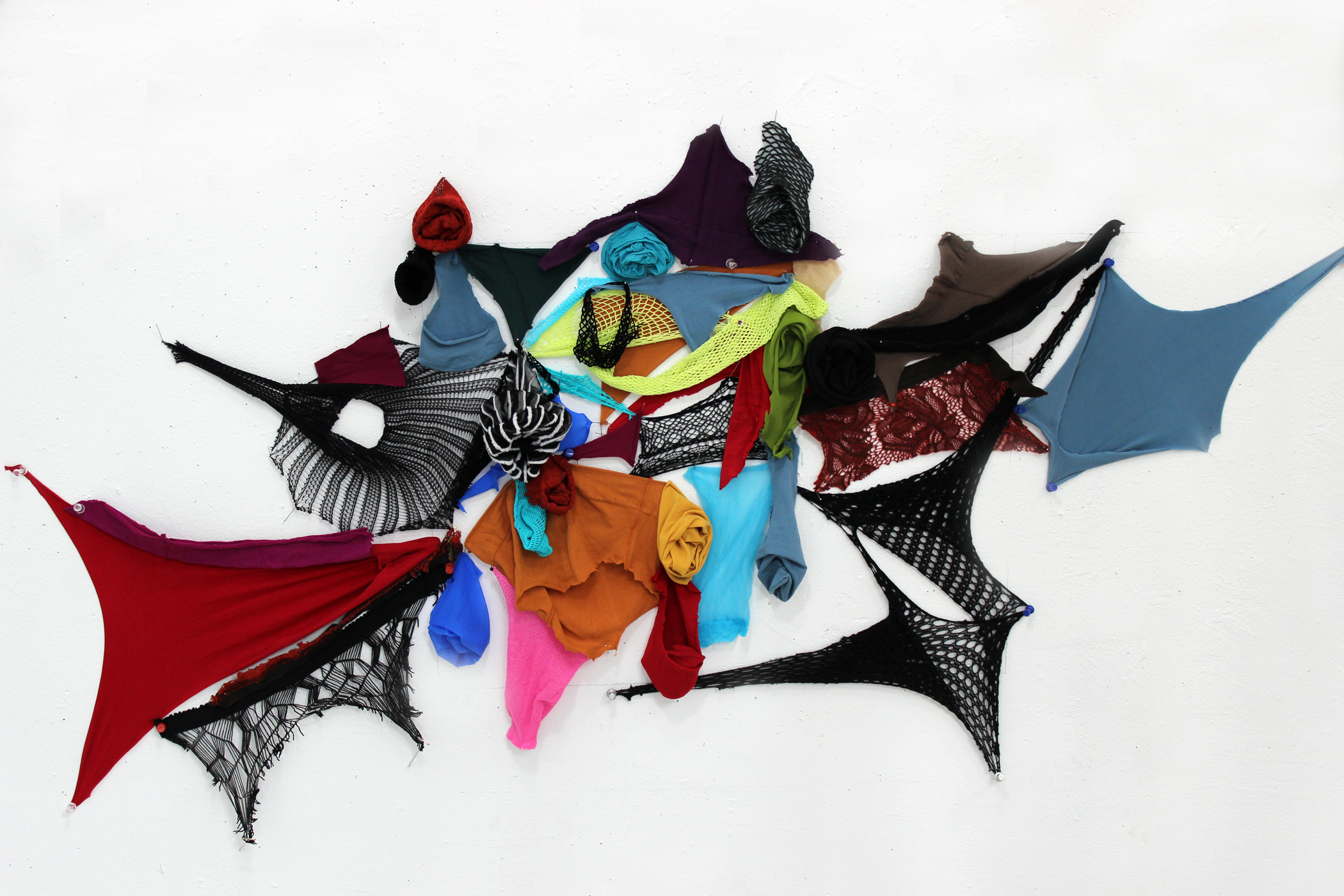
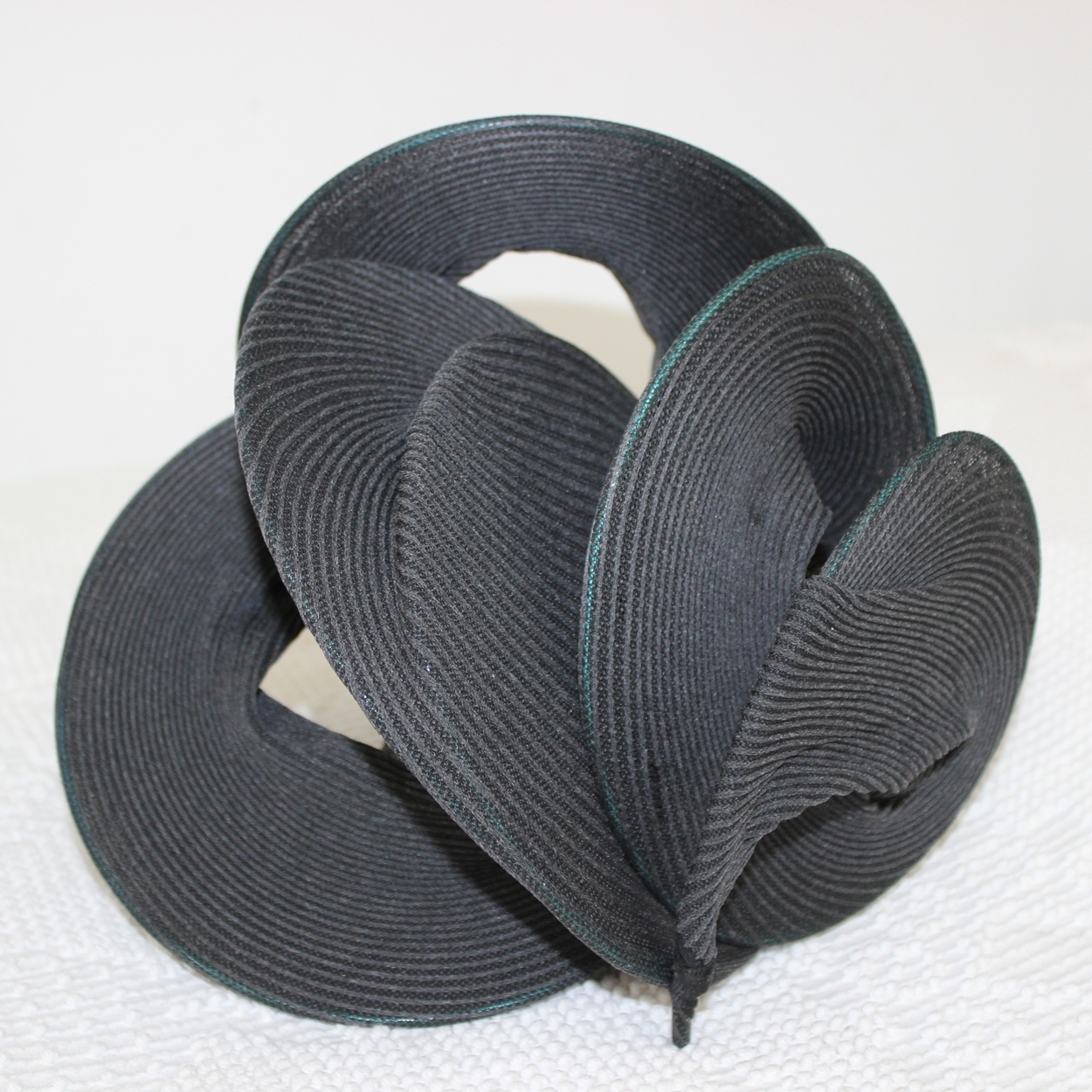
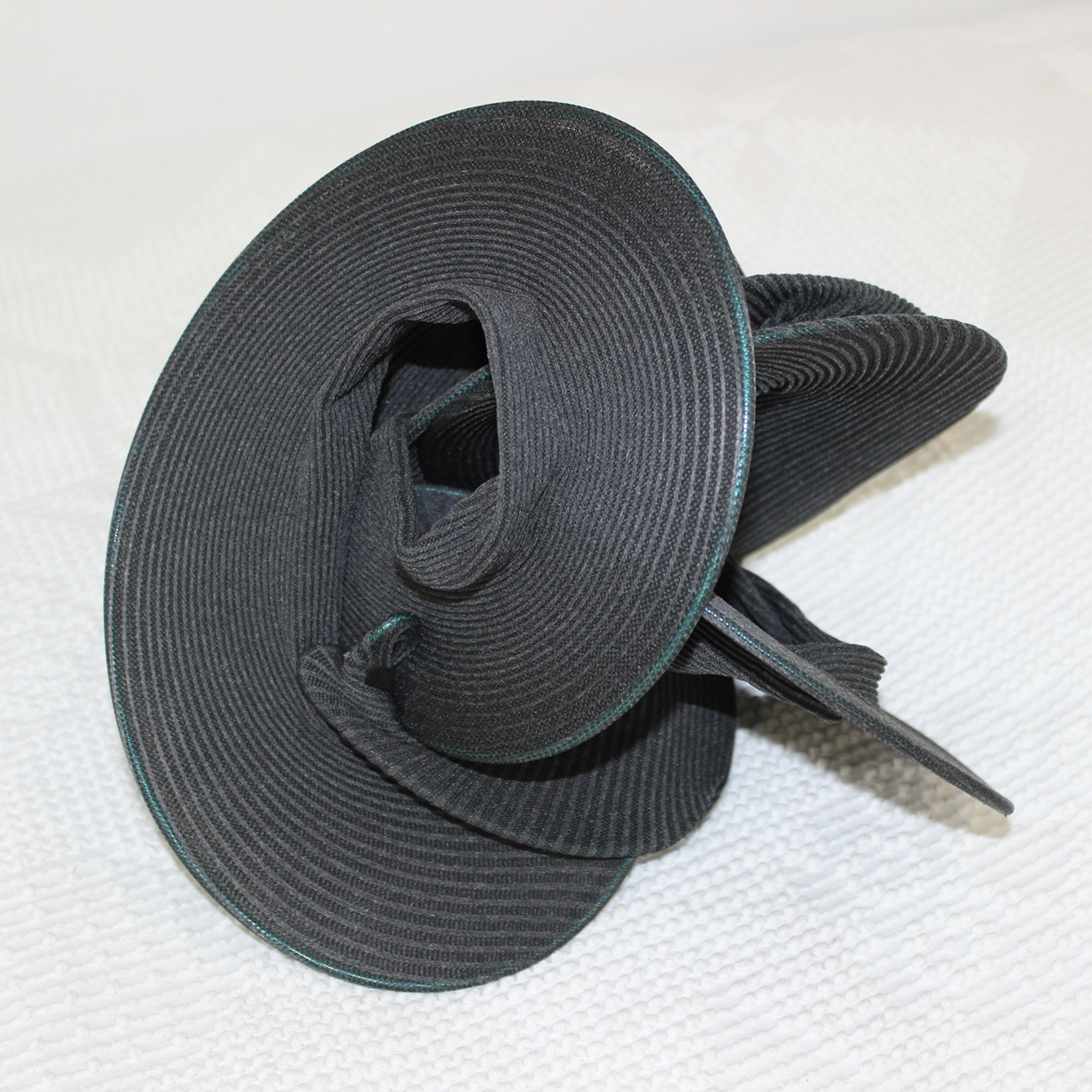

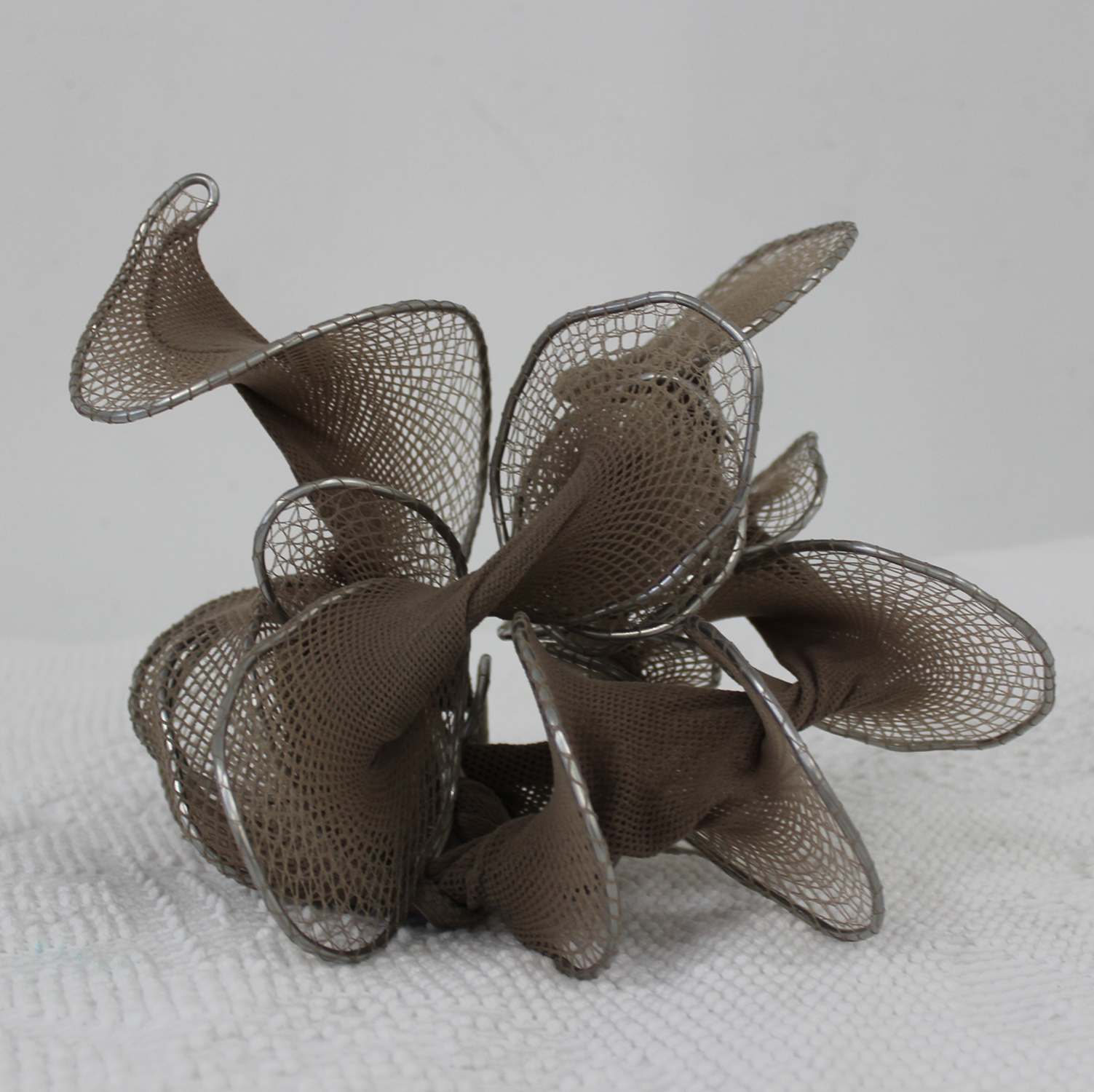





































This vest is made from more than 4,000 re-used metal keys, garment labels, fabric, and thread. The weight is just over 80 lbs. which represents the average weight of clothing every person in the U.S. tosses in the trash every year. There is also a short video that goes along with the installation so viewers can also hear the beautiful siren song the vest makes when someone walks in it, like the twkinkling notes of “Buy me, buy me.”
Back view.
Detail of shoulder area.
This view of the work., taken during a solo exhibition at the Meredith College Gallery, shows the spinal cord shape created by the jeans waistbands, ranging in size from infants to 3X.
This photo is from “Southern Strands: North Carolina Fiber Art,” an exhibition of the work of 40 NC fiber artists.
Utilizing remnants from the jeans waistband sculpture, previous, I used the inner and outer seams to create a chart. The effects of using GMO seed on our environment, on the health of farmers and farm workers has been abundantly documented. The exponential increase in the demand for jeans, of all shapes, colors, and styles— by people the world over—has lead to a parallel increase in the death rate of farmers and farm workers who are all but forced into using GMO seeds that purport to increase yields, but also require the use of more an more toxic pesticides as time goes by.
The truth is most Americans and Western Europeans and more and more people the world over wear jeans. Jean manufacturers have figured out vastly more ways than the standard fly-front first made by Levi in 1801. Now they come in a variety of washes, colors, blends, styles, lengths, stretch, and more, such that many people have from 2-20 jean garments in their wardrobes. The irony here is that consumers are often duped into paying significantly higher prices for the models that have been “pre-distressed,” in a variety of ways, which tend to shorten the useful life of the garments because they fall apart faster and/or fall out of fashion.
Rear view of the work installed at Rocky Mount Mills. Community members contributed to the skirt installation by gifting their used jeans, knowing they would be given to charity thrift shops for resale when the piece was deinstalled.
Photograph by Bayard Wooten of a 1920s denim mill in Greensboro, NC
Nearly complete work in progress—demonstration and interaction with the visiting public.
This sculpture is an amalgam of a 1970s cotton Double Wedding Ring quilt and cheap polyester blouses from the 2000s.